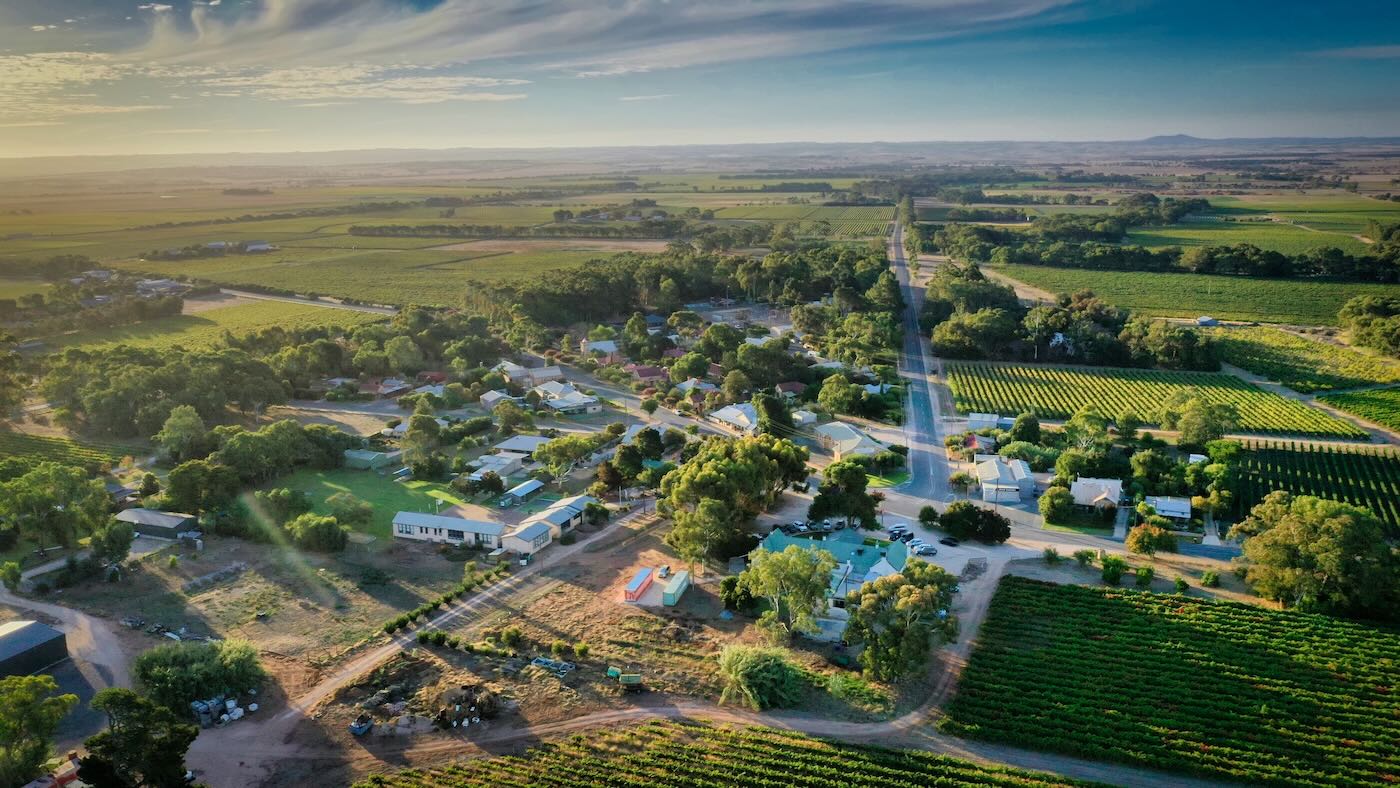Defining the identity of a winemaking region can be a mind-boggling task. The answer begs to be simple and direct, but the truth is often far more complex.
To do justice to that quest, Paul Hotker digs deeply into the history and natural gifts of Langhorne Creek to come to a revealing conclusion.
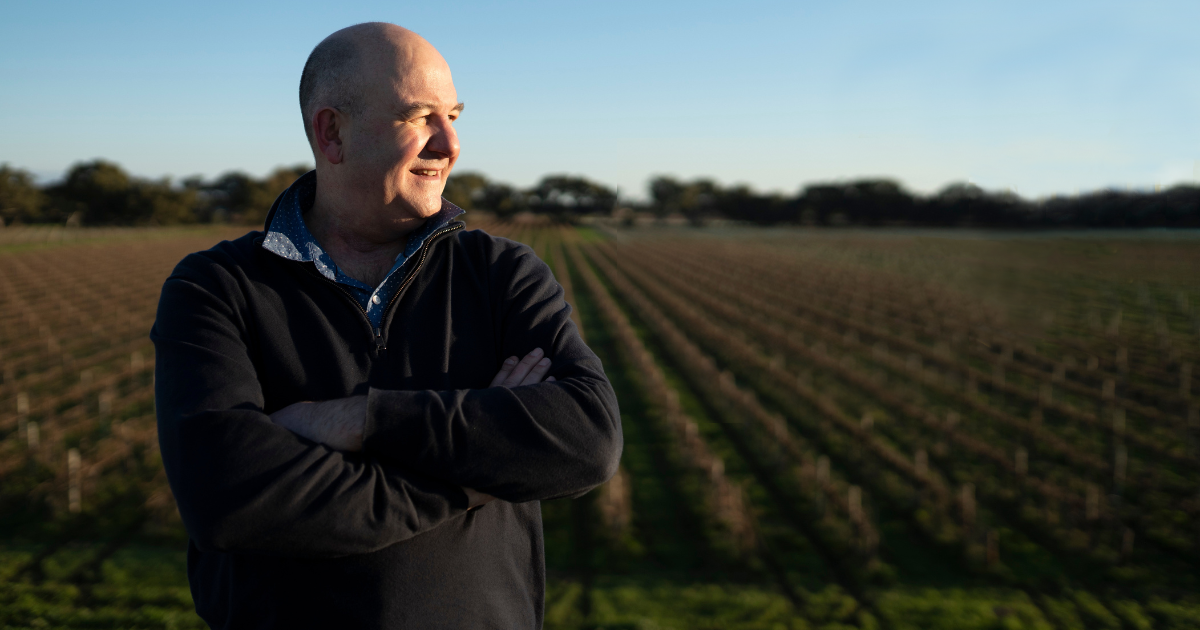
For the senior winemaker and a key figure at Bleasdale winery since 2007, where the region’s grape and wine story essentially began, he can draw on multi-generations of stories from the old timers to more recent winemaking legends to write his own love letter to Langhorne Creek.
“The story of producing great wines here goes back a long way,” Paul reflects on the arc of “The Creek’s” history from the mid-1800s to the present day.
“It’s all about the people that have been involved in the region, and Bleasdale by default, who have elevated the region generally.”
The early history is well documented, with the arrival of Frank Potts, his initial land purchase in 1849 of 217 acres, followed by vineyard plantings in the 1850s, critically Shiraz and Verdelho in 1858. He also began wheat cropping, built a public house, designed a water-pumping mill made to direct the Bremer’s water through channels to vineyards, and built red gum basket presses and vats for himself and neighbours. By 1880 he was making 6000 gallons of wine, the only winery from the region to feature among the state’s leading producers.
In that same decade Arthur Follett planted his family’s first table grape vines – the family now an integral part of the region’s identity based at their Lake Breeze winery.
The final decade of the 19th century also witnessed the planting in 1891 of the Metala Vineyard, 21 rows of Shiraz and 14 rows of Cabernet, added to in 1894 with five more acres of Shiraz – the original vineyards still producing fruit today.
The vineyard’s Metala name eventually brought Australia-wide attention in 1962 to the Langhorne Creek region when its Claret Type 1961 (Cabernet Shiraz), then made and owned by Stonyfell Wines, won the first ever Jimmy Watson Trophy at the Royal Melbourne Wine Show.
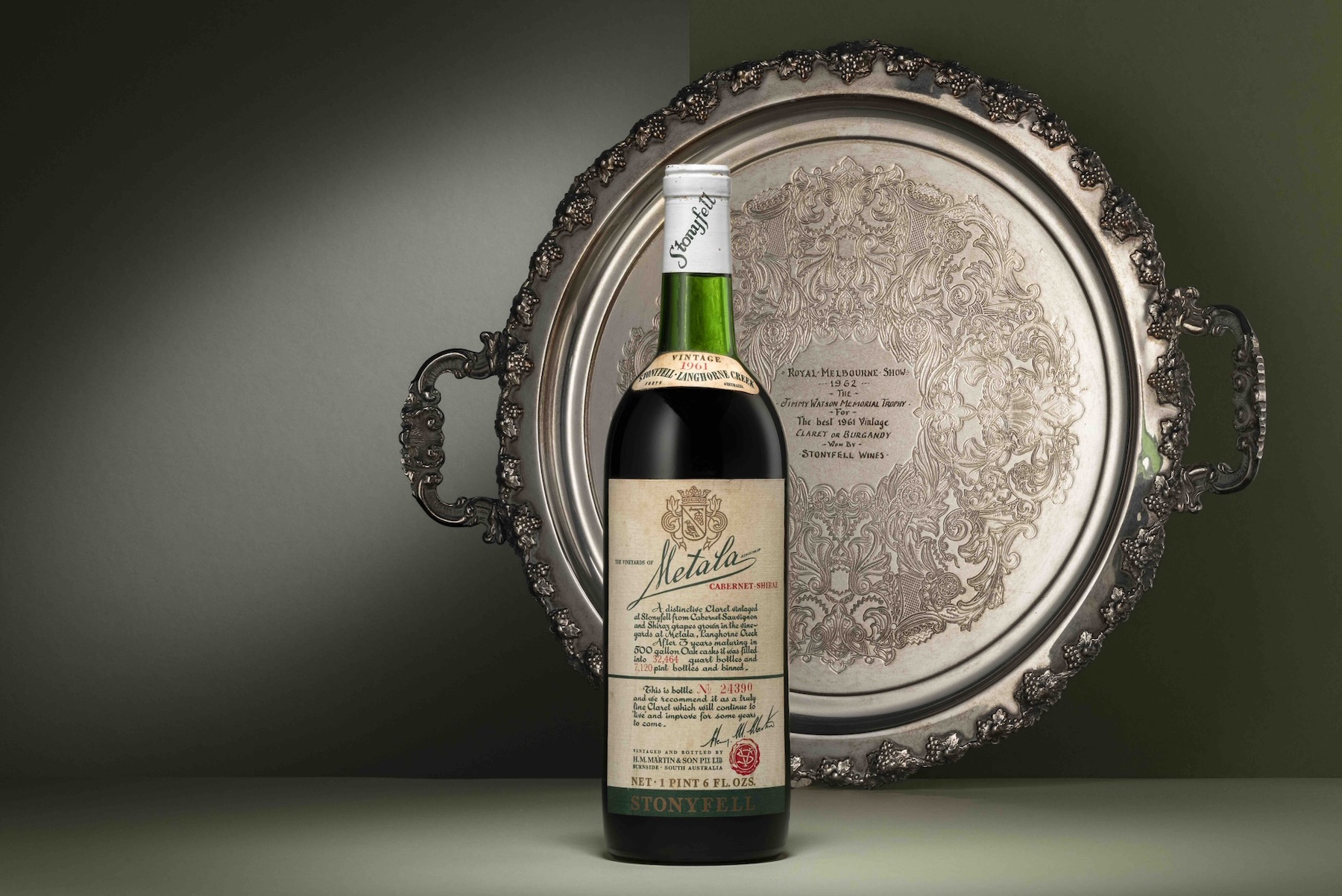
The recognition clearly attracted further interest, with a list of Australian winemaking luminaries becoming increasingly involved in the district.
As the Australian market was transitioning from fortified to table wines, leading producer Lindeman’s, steered by chief winemaker and eventual managing director Ray Kidd, was encouraging its preferred suppliers, including Bleasdale, to invest in technology, vineyards and staff, with an aim to make more elegant and balanced wines.
Hotker recalls an archival photograph from the time when a new roof was being erected on the Bleasdale building. Renowned Lindeman’s winemakers and bulk wine buyers for the firm, Phil Laffer and John Vickery, were in the picture.
“Phil and John were so impressed with the region they later influenced Orlando to develop vineyards here for Jacob’s Creek,” Paul notes, signalling the beginning of larger corporate involvement in the region.
In the same era, renowned winemaker Iain Riggs worked at Bleasdale before moving later to his legendary position at the Hunter Valley icon Brokenwood winery.
As well, Wolf Blass was a consultant at Bleasdale, advising an early sparkling wine program in the style of Barossa Pearl. Later, Blass gained extraordinary notice over three consecutive years winning the 1974, ’75 and ’76 Jimmy Watson Trophies with his Dry Red Clarets made from Langhorne Creek fruit.
“In the ‘70s, the South Australian wine industry wasn’t anywhere near the size it is now,” Paul says. “There were only pockets of winemaking across the state, irrigation was all new and barely operating and the natural flooding here was more reliable in those days, and the only source of water other than sparse rainfall.
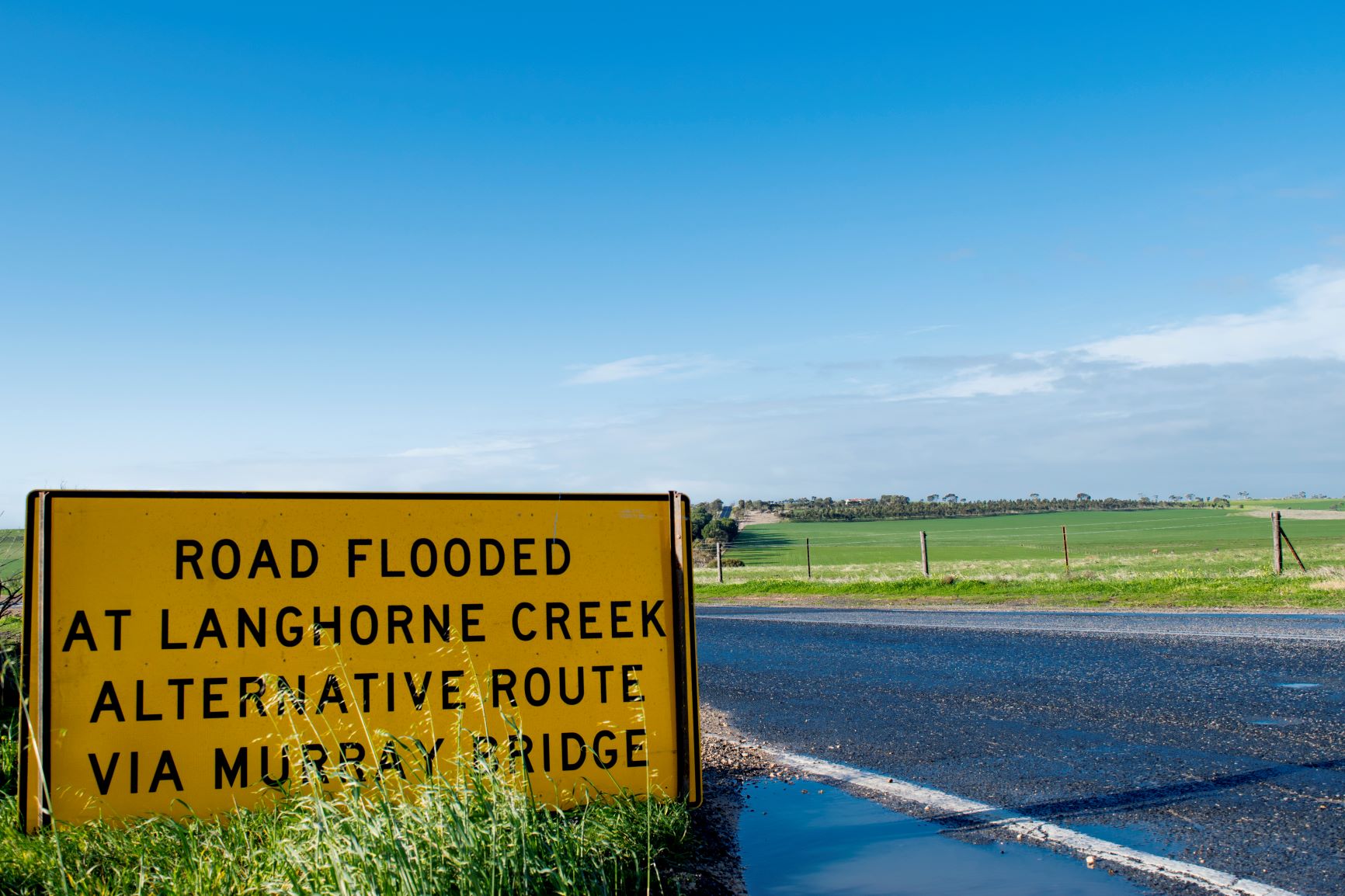
“It’s a cool dry climate, and disease pressure is low because of it being dry. So, the quality of the crops was and remains very good.”
The Creek’s reputation was clearly on the rise, with corporate interest at one end of the spectrum key to the economic future of the region. Meanwhile, new family growers began to follow in the footsteps of the original local dynasties – names such as Lake Breeze (The Follett family), Bremerton (The Willson family), Kimbolton (the Case family, descendants of the Potts of Bleasdale, and long-term grape-growers such as the Cleggett, Wenzel, Borrett, Elliott (of the Dodd family) and Cross families who are now integral to the district’s ongoing success.
As this local evolution continued, so too did winemaking and consumer trends join the winds of change across the wider industry.
Staying up to date and evolving with the industry have been the key pointers to Langhorne Creek’s survival, according to Hotker.
When richer, fuller bodied, oaky and higher alcohol red wines became the rage in the late 1990s and early 2000s, aided by the support of international critic Robert Parker, Paul’s assessment of Langhorne Creek’s attempt at these more muscly styles is that they became “anywhere wines” and lost their true regional identity which had developed over the previous three decades as medium bodied, spicy and aromatic styles, often just 12.5% and 13% abv.
“So as the market later began to shift away from those big, full-bodied bruisers, looking for freshness, vibrancy and spicy characters, it was very easy to return to medium bodied wines,” Paul says. “Because that’s what our regional identity is actually about.
“Because of our cooler ripening conditions, we get flavour before alcohol, where it’s the opposite in the hotter regions where the sugars get there before the flavour does.
“So, the wine part of our evolution has been easy in that sense,” Paul says.
This goes also for the specific situation with Cabernet Sauvignon, which for many is Langhorne Creek’s signature variety. While wider industry statistics show a decline in consumer interest in Cabernet, the conundrum in Langhorne Creek is its Cabernets have risen to much-lauded heights in terms of quality. Bleasdale’s 2020 and 2021 The Iron Duke Cabernet Sauvignon was judged the best Cabernet Sauvignon in the country two years in a row in the Halliday Companion awards (2023,2024), while the Bleasdale Vineyards 2021 Wellington Road Shiraz Cabernet topped the Cabernet-Shiraz blends class in the 2024 Companion, and Lake Breeze’s The Drake Cabernet Sauvignon-Shiraz (2016 and 2018 vintages) garnered top three scores in its class in the 2023 and 2024 awards.
What gives in this case? The noted drop in consumer interest is about “generic Cabernet” Paul says. “But if you have regionality and varietal character, that’s going out the door.
“If you get the variety and the region right, and the wine is good, and has distinctive character – we see the same with Bremerton, Kimbolton, Lake Breeze and Metala, wines, which all have a really strong regional and varietal signature.
“Then that’s integrity right there!”
Of course, the trend to alternative varieties and blends raises questions about the future of such regional anchors that help trade and consumers to identify Langhorne Creek with a recognisable style of wine. The region has garnered a reputation as an incubator for Mediterranean varieties such as Montepulciano, Fiano, Nero d’Avola, Tempranillo, Graciano and so on, supplying many locals as well as new-generation wineries in neighbouring McLaren Vale and Adelaide Hills.
“But there are rusted on regional-varietal combinations, and they’re rusted on for a reason,” Paul says. “It’s great to push those boundaries, with the new and exciting varieties, and we now have a lot of diversity in the region, but Cabernet, Malbec and Shiraz is what it’s all about – they are our regional identifiers.”
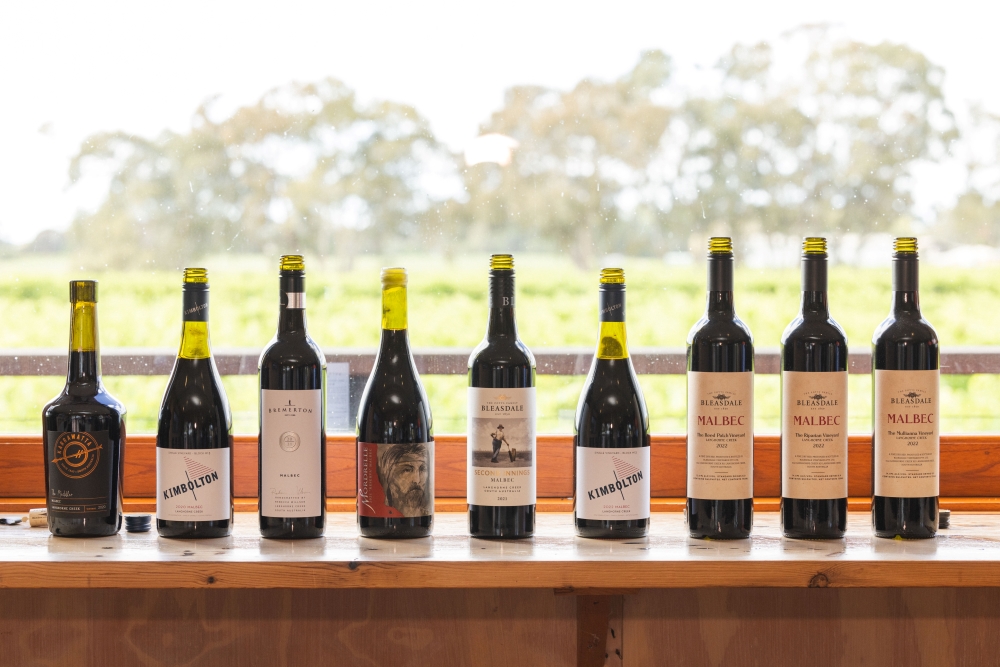
While wine and grape growing has been the most visible of Langhorne Creek’s agricultural assets, there’s another vital side to the region where mixed and varied farming has driven the community for generations.
“It’s very much a food bowl,” Paul says. “It’s really good farming land. It’s very fertile, and it’s not just about wine, it’s about the district’s veggie growers – there’s potatoes, carrots, lettuces, sprouts, cabbages, almonds, pomegranates, as well as barley and canola.
“We’ve got beautiful soils, and it’s the climate. In droughts it’s just a bit drier than usual, while in a wet year it’s just a bit wetter than usual. We don’t suffer the extremes that some other regions do.
The fertility of the region brings genuine value to its produce, Paul says.
“It’s a land of plenty – I think that’s probably what the true identity is.
“That’s where the value comes from in the wines – the vines like growing here, disease pressure is low, the cost of production is pretty reasonable. I think people get that and they love all that.
“And you see it in the wines. There’s a sense of abundance that comes with the wines and the region – a generosity of the people here and a generosity in the wines without being full blown or over the top.
“They speak about being from this land of plenty. They are just full of flavour and deliciousness, and there’s a lot of pleasure to be had in our wines.”
#
Paul Hotker was named Winemaker of the Year for 2017-2018 by the Halliday Wine Companion. The winery was named the Halliday Wine Companion Winery of the Year for 2024.
Bleasdale Vineyards was awarded the prestigious Jimmy Watson Memorial Trophy for the Best One or Two-Year-Old Red Wine at the Royal Melbourne Wine Awards for its 2018 Wild Fig SGM.

